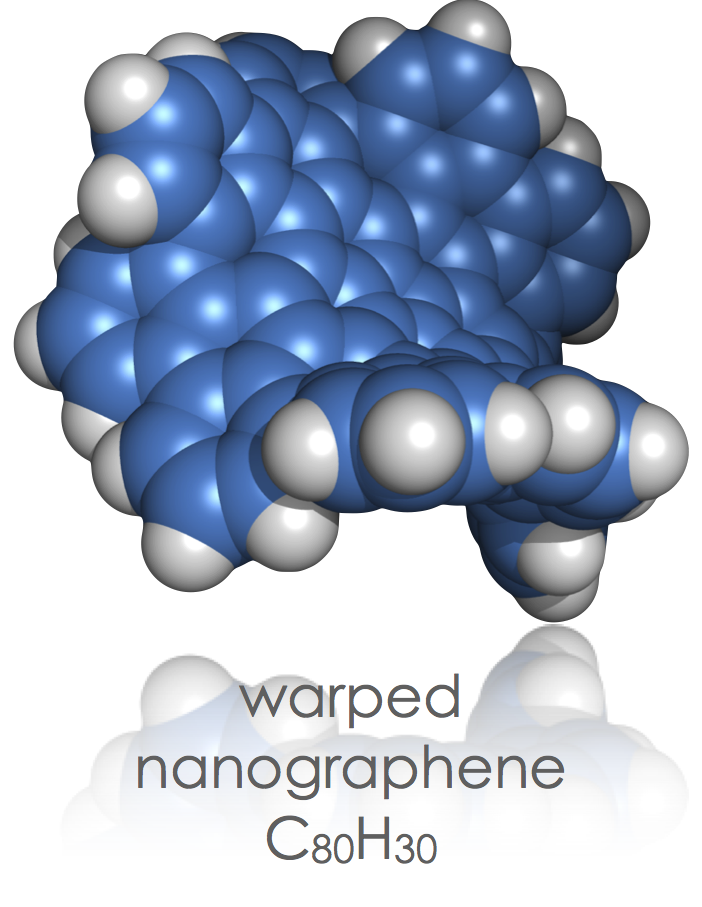


Katsuaki Kawasumi, Qianyan Zhang, Yasutomo Segawa, Lawrence T. Scott, and Kenichiro Itami
Nature Chemistry, 2013, doi: 10.1038/nchem.1704
Graphite, the most stable form of elemental carbon, consists of pure carbon sheets stacked upon one another like reams of paper. Individual sheets, known as graphene, prefer planar geometries as a consequence of the hexagonal honeycomb-like arrangements of trigonal carbon atoms that comprise their two-dimensional networks. Defects in the form of non-hexagonal rings in such networks cause distortions away from planarity. Herein we report an extreme example of this phenomenon. A 26-ring C80H30 nanographene that incorporates five seven-membered rings and one five-membered ring embedded in a hexagonal lattice was synthesized by stepwise chemical methods, isolated, purified and fully characterized spectroscopically. Its grossly warped structure was revealed by single-crystal X-ray crystallography. An independent synthetic route to a freely soluble derivative of this new type of ‘nanocarbon’ is also reported. Experimental data reveal how the properties of such a large graphene subunit are affected by multiple odd-membered-ring defects.